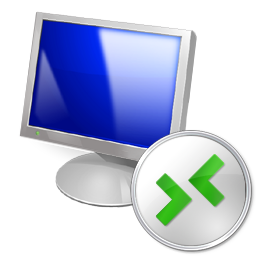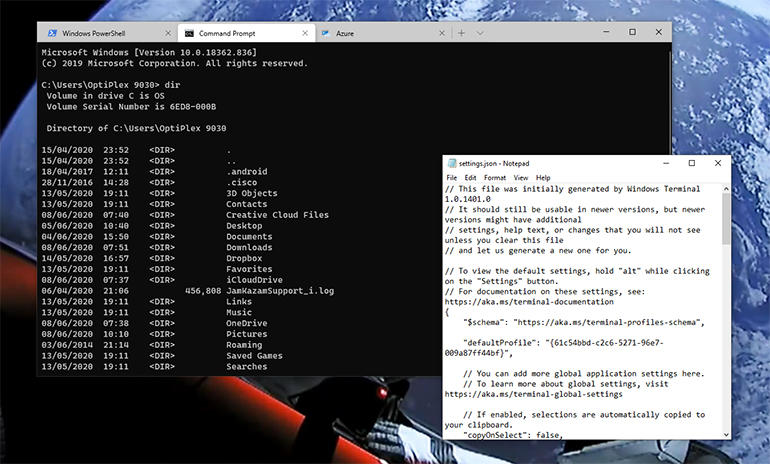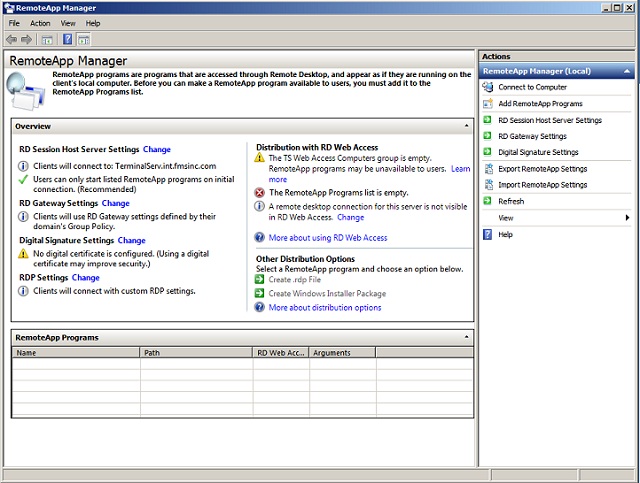Download Terminal Emulation Client for Windows 10 for Windows to stayLinked is the only Terminal Emulation (TE) product specifically designed for wireless environments. I'm using Terminal 1.0.1401.0. It's only happening with telnet, not SSH. I'm using the inbuilt Windows 10 telnet client. It happens with both PowerShell and Command Prompt running in Terminal. I can successfully scroll using the old Console, with both Command Prompt and PowerShell. I hope this helps.
-->When an unlicensed client connects to a Terminal Server for the first time, the Terminal Server issues the client a temporary Terminal Server Client Access License (CAL) token. After the user has logged into the session, the Terminal Server instructs the License Server to mark the issued temporary Terminal Server CAL token as being validated.
This article describes the Remote Desktop Connection (RDC) client requirements to use Terminal Services Web Access in Windows Server.
Original product version: Windows Server 2012 R2
Original KB number: 943887
Introduction
Terminal Services (TSWeb) in Windows Server 2008 and Remote Desktop Services (RDWeb) in Windows 2008 R2 are role-based services. They let users start RemoteApp and Desktop Connection from a web browser. RemoteApp and Desktop Connection provides a customized view of RemoteApp programs and virtual desktops to users. When a user starts a RemoteApp program, a Terminal Services session is started on the Windows Server 2008-based terminal server that hosts the RemoteApp program.
To start a RemoteApp program, a user connects to a website that is hosted on the Windows Server 2008-based TS Web Access server. When the user connects to the website, a list of available RemoteApp programs appears. Additionally, TS Web Access lets users connect to the remote desktop of any server or client computer on which the user has the required permissions.

Resolution
If you're using Windows Server 2008 R2, you must use RDC client version 7.
You must have the RDC client version 6.1 installed to use TS Web Access with the following operating systems:
Windows Server 2008
Windows Vista with Service Pack 1 (SP1)
Windows XP with Service Pack 3 (SP3)
Note
RDC 6.1 (6.0.6001) supports Remote Desktop Protocol 6.1.
If you're experiencing this issue on a Windows Vista-based computer, you must have Windows Vista Service Pack 1 installed on your computer.
If you're experiencing this issue on a Windows XP-based computer, you must have Windows XP Service Pack 3 or RDC 6.1 installed on your computer.
Advanced Information
Information for administrators
When users try to connect to TS Web Access from a computer that has an earlier version of the RDC client installed, they'll receive an error message that includes a URL. This URL points the user to a webpage where they can find more information.
Currently, the URL that is included in the error message points to this Knowledge Base article. However, you can change the URL that is included in the error message. To modify the URL, use one of the following methods.
Method 1: Use an ASP.NET application setting
To change the URL that is included in the error message, use an ASP.NET application setting. To do so, follow these steps:
Select Start > Run, type
Inetmgr.exe, and then selectOK.Expand the server name, expand Sites > Default Web Site, and then select TS.
Note
By default, TS Web Access is installed in the default website.
Under
ASP.NET, double-click Application Settings.In the actions pane, select Add.
In the Add Application Setting dialog box, type rdcInstallURL in the Name box.
In the Add Application Setting dialog box, type the URL for the webpage that includes more information about how to use TS Web Access, and then select OK.
Method 2: Edit the Web.config file

To change the URL that's included in the error message, you can edit the Web.config file for the TS Web Access website. To do so, follow these steps:
Open the Web.config file for the TS Web Access website in Notepad.
Note
By default, the Web.config file for the TS Web Access website is located in the Webts folder.
Locate the <appSettings> section in the Web.config file.
In the <appSettings> section, add the following entry:
<add key='rdcInstallUrl' value='
http://URL' />Note
The URL placeholder is the URL for the webpage that includes more information about how to use TS Web Access.
On the File menu, select Save.
Exit Notepad.
Information for non-administrators
If you aren't an administrator, contact the system administrator if you have problems when you use TS Web Access. For example, the system administrator can help you obtain and install an updated version of the RDC client.
More information
Related topics
Depending on your version of Windows Server, see one of the following articles:
- The Remote Desktop Services home page (Windows Server 2008 R2) on the Windows Server TechCenter.
- The Terminal Services home page (Windows Server 2008) on the Windows Server TechCenter.
- Remote Desktop Services in Windows Server 2008 R2 in the Windows Server 2008 Technical Library.
- Terminal Services in Windows Server 2008 in the Windows Server 2008 Technical Library.
More Resources
Microsoft Terminal Services Client
Select the following links to find more options if this article can't resolve your problem:
-->Windows 10 has a built-in SSH client that you can use in Windows Terminal.

In this tutorial, you'll learn how to set up a profile in Windows Terminal that uses SSH.
Create a profile
You can start an SSH session in your command prompt by executing ssh user@machine and you will be prompted to enter your password. You can create a Windows Terminal profile that does this on startup by adding the commandline setting to a profile in your settings.json file inside the list of profile objects.
For more information, see:
Specify starting directory
To specify the starting directory for a ssh session invoked by Windows Terminal, you can use this command:
Remote Terminal For Windows 10
The -t flag forces pseudo-terminal allocation. This can be used to execute arbitrary screen-based programs on a remote machine, e.g. when implementing menu services. You will need to use escaped double quotes as bourne shell derivatives don't do any additional parsing for a string in single quotes.
For more information, see:
Windows Terminal App
Resources
